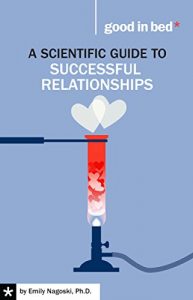A life partnership is a learning experience. We are constantly learning the ways we were wrong, and the ways we can be better, kinder, more patient, more empathetic, more respectful and more appreciative. Indeed, such a partnership is perhaps the most educational and most humbling experience most of us will have in our lives.
The goal of this guide is to provide a practical summary of the science of romantic relationships. In addition to the evolutionary origins of the emotions that make relationships at once so challenging and so nourishing, it presents the skills and patterns that predict positive outcomes in relationships. Most importantly, the guide discusses how to implement this information, which can only be effectively applied in the context of the appropriate attitude. That attitude is, “I’m never perfect, never done growing, and neither is my partner. But I’m always growing, and so is my partner, so we’re exactly where we need to be.”
Part 1, “Attachment,” is about the biological mechanism that motivates us to be near people and stay near them. It explains the delicious insanity of falling in love, the agony of jealousy, and much of the basic human need to be in relationships in the first place.
Part 2, “What We Give and Receive,” describes the emotional resources that we need and can only get from other people. There are numerous models in the research literature for this, and the guide boils those down to three essentials: respect, gratitude, and autonomy.
Part 3, “The Skills,” identifies three fundamental skills for effectively meeting your partner’s needs and communicating your own needs to your partner. Are these all the skills? No, but if you can master these three, you’re well on your way to being a dream partner.
And Part 4, “Troubleshooting,” directly addresses some of the most common problems couples confront, including stress, criticism, conditional positive regard, jealousy, and overfunctioning.
Can this little guide teach you everything you need to know in order to have a successful, stable, happy relationship? Of course not. For example, it can’t possibly tell you about your partner’s individual needs and their enduring vulnerabilities - only your partner can tell you that! But this guide can help you to learn all those things from your partner, and it can give you a conceptual framework for understanding yourself, your partner, and the healthiest way you maximize both your and your partner’s happiness in the relationship.
About the Author
Emily Nagoski has a Ph.D. in Health Behavior, with a concentration in Human Sexuality from Indiana University, and a Masters degree in Counseling Psychology also from IU, including a clinical internship at the Kinsey Institute Sexual Health Clinic. While at IU, Emily taught courses in both Human Sexuality and Marriage and Family Interaction. With more than a decade’s experience as a sex educator and an unshockable enthusiasm for empowering others to have healthy, joyful sex, Emily brings insight and clarity to the often perplexing, always fascinating world of human sexuality.
The goal of this guide is to provide a practical summary of the science of romantic relationships. In addition to the evolutionary origins of the emotions that make relationships at once so challenging and so nourishing, it presents the skills and patterns that predict positive outcomes in relationships. Most importantly, the guide discusses how to implement this information, which can only be effectively applied in the context of the appropriate attitude. That attitude is, “I’m never perfect, never done growing, and neither is my partner. But I’m always growing, and so is my partner, so we’re exactly where we need to be.”
Part 1, “Attachment,” is about the biological mechanism that motivates us to be near people and stay near them. It explains the delicious insanity of falling in love, the agony of jealousy, and much of the basic human need to be in relationships in the first place.
Part 2, “What We Give and Receive,” describes the emotional resources that we need and can only get from other people. There are numerous models in the research literature for this, and the guide boils those down to three essentials: respect, gratitude, and autonomy.
Part 3, “The Skills,” identifies three fundamental skills for effectively meeting your partner’s needs and communicating your own needs to your partner. Are these all the skills? No, but if you can master these three, you’re well on your way to being a dream partner.
And Part 4, “Troubleshooting,” directly addresses some of the most common problems couples confront, including stress, criticism, conditional positive regard, jealousy, and overfunctioning.
Can this little guide teach you everything you need to know in order to have a successful, stable, happy relationship? Of course not. For example, it can’t possibly tell you about your partner’s individual needs and their enduring vulnerabilities - only your partner can tell you that! But this guide can help you to learn all those things from your partner, and it can give you a conceptual framework for understanding yourself, your partner, and the healthiest way you maximize both your and your partner’s happiness in the relationship.
About the Author
Emily Nagoski has a Ph.D. in Health Behavior, with a concentration in Human Sexuality from Indiana University, and a Masters degree in Counseling Psychology also from IU, including a clinical internship at the Kinsey Institute Sexual Health Clinic. While at IU, Emily taught courses in both Human Sexuality and Marriage and Family Interaction. With more than a decade’s experience as a sex educator and an unshockable enthusiasm for empowering others to have healthy, joyful sex, Emily brings insight and clarity to the often perplexing, always fascinating world of human sexuality.






